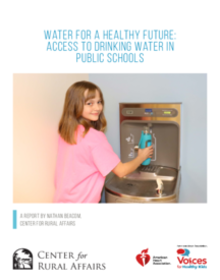Childhood obesity is an ongoing epidemic in the U.S. Approximately 19.3 percent of American youth ages 2 to 19 have a body mass index above the 95th percentile, according to the Centers for Disease Control and Prevention’s (CDC) age and sex-specific metrics for healthy body weight.
Percentages of obese individuals increase with age, and, as of 2018, 42.48 percent of American adults are considered obese. Childhood obesity is an indicator for obesity later in life, which is associated with an increased risk of serious disease, including diabetes, hypertension, heart disease, stroke, depression, and early mortality in general. In cases of emerging infectious respiratory disease, such as the current coronavirus pandemic, obesity is associated with an increased incidence of serious disease and death.
In Nebraska, more than 30 percent of youth ages 10 to 17 are overweight or obese. The percentage is particularly high among Hispanic and African American populations, and, generally, among lower-income populations.
Among other important vectors for unhealthy weight in children, including a sedentary lifestyle and poor diet, is thought to be the consumption of sugar-sweetened beverages. Such beverages account for the primary source of added sugar in the diets of children and adolescents, and may be a key contributor to the epidemic of unhealthy weight in children.
Recent research indicates that access to clean drinking water throughout the day in school settings can be a significant intervention, alongside education and diet change, in preventing childhood obesity. Ready availability of water gives children an alternative to sugar-sweetened beverages.
The aim of this study is to give an overview of the state of childhood obesity in Nebraska, of the evidence for drinking water access as an effective and significant public health intervention, of the existing laws, regulations, and compliance surrounding water access, and, finally, to suggest effective policy interventions to guarantee students ready access to clean drinking water.
Policy


